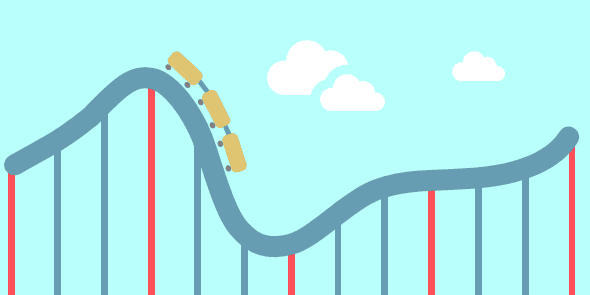Managing Life Overseas: Introduction to the cultural adaptation process
- Roy Edwards
- Aug 3
- 4 min read
Updated: Aug 16

In the blog last week, we concluded our exploration of the critical importance of learning more about the contrasting cultural values of our domestic and the new host nation when planning to live overseas. The English-speaking nations (ESNs) were selected as an example of a domestic or home context while the Confucian and Muslim national clusters were examined as reflecting common expat destinations.
This week, we will attempt to gain an initial exploratory overview of another essential pre-arrival preparatory issue. This centres on an attempt to anticipate the cultural challenges that sojourners typically encounter when entering a new cultural context called the U-curve cross-cultural adaptation process.
Understanding the U-Curve adaptation stages

The U-Curve adaptation phases
Learning to live successfully overseas for an extended period can be a roller coaster encounter with the host nation as we attempt to settle in and settle down in the new cultural context. This process of challenge and development when living abroad was first researched in 1955 by Lysgaard resulting in what is called the U-Curve model of cross-cultural adaptation. The four key phases are typically listed as the Honeymoon, Shock, Recovery, and Mastery.
However, it is important to note from the outset that an encounter with each stage is far from inevitable, while the intensity experienced varies significantly from one individual to another. Indeed, the overall encounter with the host nation will be highly influenced by unique personal combination of the 5Ps of planning, preparedness, placement, position, and personality that will form the focus of a separate blog in this series.
Overview of the four key stages of cultural adaptation
The Honeymoon Phase
Overwhelmed by over simulation
0 to 3 months
Those arriving in a new host cultural context often report an initial sense of euphoria as they quickly become infatuated by the new customs, people, interpersonal behavioural expectations, dress codes, lights, sounds and smells. For the tourist, this phase can last throughout their stay and provide wonderful take-a-way memories of their experience.
However, living overseas for extended periods either to work or study has no connexion with any passing visit. Moreover, exposure to unmanaged overstimulation during this first phase can hasten the arrival of unexpected frustrations that can trigger early negative feelings. We shall explore the potential threats during this phase and the possible consequences in the next blog.
The Culture Shock Phase
Lost in disorientation
3 to 9 months
In contrast to the tourist, the extended stay sojourner will gradually encounter a sense of emerging frustration in the new environment, which is a positive signal of the reality of everyday practical challenges are now beginning to kick in. What had once seemed fascinating, intriguing, and exciting can now start to feel somewhat uncomfortable. Suddenly, we awaken to the reality that the practical demands of everyday life have not gone away just because we’ve gone away from our domestic cultural context.
Then, during this phase, we discover that what used to be regarded as everyday routine tasks are no longer so comfortable to manage effectively in the new context. This encounter with culture shock is not generally triggered by some major single crisis, but by a sequence of otherwise relatively innocuous minor events across a relatively extended period.
However, if not managed, the negative emotions generated by everyday repetitive shocks arising from otherwise unexpected unknown unknowns can prompt a further emotion deterioration into outright aggressive and exhausting culture clash.
The Recovery Phrase
Transforming from critic to researcher
9 to 48 months
For a restively small minority, the experience of culture clash can spark an unwelcome variety of debilitating conditions such as homesickness, chronic loneliness, depression, or even various forms of physical ailment such as constant tiredness or depression. It is at this point that some sojourners feel impelled to make the decision of whether to stay or return home.
Consequently, given the critical nature of this phase, we shall explore practical recovery strategies later in this series such as committing to the transition from being a constant tiresome negative comparative critic, to an active positive cross-cultural researcher.
The Mastery Phase
Feeling at home in our new home overseas
48 months and beyond
Naturally, even at this stage there will still be plenty of bumps in the road as, indeed, there always are back in home context. However, life is now considerably more comfortably manageable combined with a sense that life in the host culture has become a home from home. Of course, as we shall see, this in then can trigger other challenges such as the threat of future counter-shock when the time comes to return to the home context, and so, the wheel of life continues to relentlessly turn.
This concludes our initial introduction to the U-curve cross-cultural adaptation process that we shall explore in more detail over the next few weeks of this series. There are, as usual, several poignant criticisms of this model that we also need to evaluate further. However, in my personal experience of living overseas for expended period in several contrasting cultural contexts, it does function successfully as a simple overview of the common prospective adaptation stages when entering any new host cultural context. So, at the very least, to be forewarned is to be forearmed.
Question 1
Could the adaptation process be more applicable to some new host cultural contexts than others?
Question 2
Are the definitions of the phases of adaptation so vague as to be of limited practical use?
Question 3
To what extent can overstimulation trigger immediate negative emotional consequences?
We shall explore Question 3 in the next blog.
Reference
Lysgaard, S. (1955). Adjustment in a foreign society: Norwegian Fulbright grantees visiting the United States. International Social Sciences Bulletin, 7, 45-51.




Comments